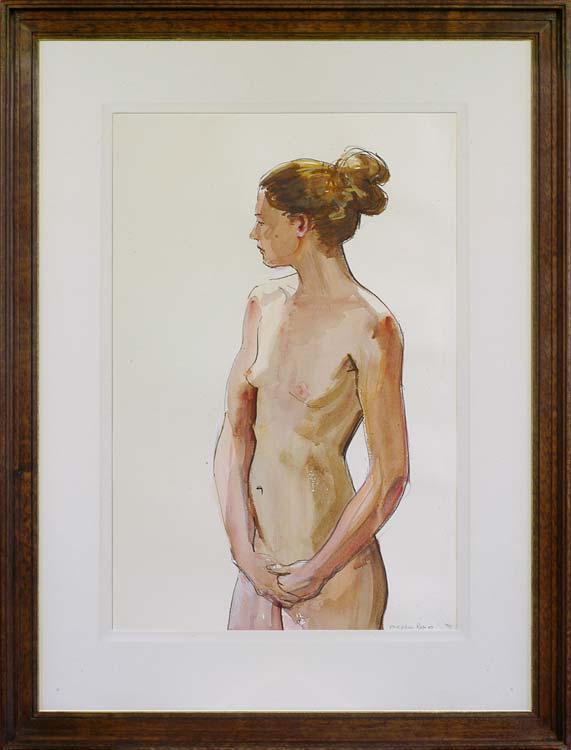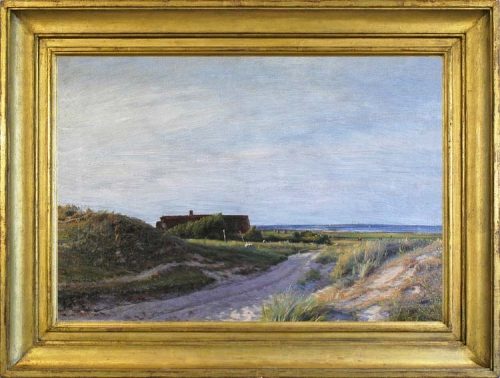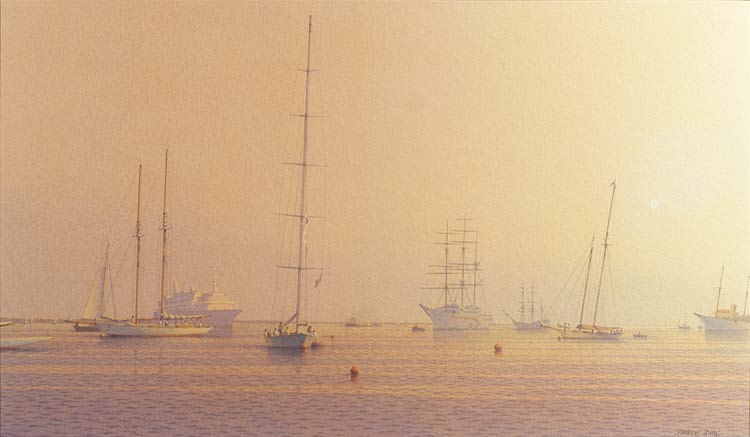When considering an artistic composition, it is natural to first attend to what is there; the figures, objects or landscapes which the artist has chosen to portray. However, there is often just as much meaning in what is absent; empty spaces can speak volumes.
Negative space – the area around and between the subject of the composition – is an important factor in artistic composition, and is used by artists in a wide range of media. There are many ways in which the use of negative space can affect the viewer; it can evoke particular emotions and feelings depending on its use.
Whilst it is referred to as “negative” space, it has by no means a negative connotation; emptiness has its own virtues, as expressed by Taoist philosopher Lao Tzu in the Tao Te Ching:
We shape clay into a pot,
but it is the emptiness inside
that holds whatever we want.
We hammer wood for a house,
but it is the inner space
that makes it liveable.
In traditional Chinese and Japanese art, the use of empty space is given the name yohaku; large areas were left blank and unpainted, and these blank spaces were considered to be a vital part of the composition, just as important as the painted spaces. In Western art, the blank spaces are often painted blanks, but they are nonetheless vital to the piece as a whole.
 Stephen Rose, Nude, standing, looking left
Stephen Rose, Nude, standing, looking left
The stark white background to Stephen Rose’s Nude, standing, looking left accentuates the purity of the figure and allows the viewer to focus on the model. Note that there is more space to the left of the painting, where the model’s gaze lies, than there is behind her to the right; this gives a sense of uncrowded space and creates a subtle air of serenity. If the figure were placed further to the left, it would create a sense of isolation and loneliness instead; an altogether different study.
Remaining with Stephen Rose for the moment, we can see how emptiness is used in his still life, A tray of eggs. Not only is the titular tray set against an empty background, placing it in an almost abstract space rather than clearly in the familiar context of a kitchen countertop, but the tray itself is largely empty, too. The opalescent swirl of the background is echoed in the colours of the six white eggs, lending emphasis to the single brown egg. The empty spaces in the tray can be thought-provoking, leading the viewer to wonder why those eggs in particular have been left; the symbolism of the egg as life, birth and innocence lends a particular poignancy to their absence.
 Sigvard Hansen, A farmstead in a coastal landscape, Fanø, 1917
Sigvard Hansen, A farmstead in a coastal landscape, Fanø, 1917
In both landscape and seascape paintings, the artist can choose to create a kind of empty space with the sky; rather than filling the space with elaborate cloud formations, flying birds or the like, they may choose to portray an empty sky, either depicting a clear day or seamless cloud cover. In Sigvard Hansen’s A farmstead in a coastal landscape, the horizon is placed low, leaving the space of the sky to dominate the composition. This creates an air of remoteness, evoking the feeling of standing beneath the endless open sky of the countryside.
 Martin Swan, Boats moored at Cowes
Martin Swan, Boats moored at Cowes
Martin Swan’s seascape of Boats moored at Cowes uses an almost ethereal dawn sky, with layers of transparent pigment building up an expanse of rose blending into gold, from which the boats themselves emerge. The tall mast of the foremost boat breaks the sky in two, and the overall effect is one of expectancy and beginnings; of things about to change.
As you can see, empty spaces in artwork are not simply an absence of content; they are their own content, and carry their own meanings. By noticing the emptiness, the absences in the piece as well as what is present, you can see more of the whole.


 Stephen Rose, A tray of eggs
Stephen Rose, A tray of eggs